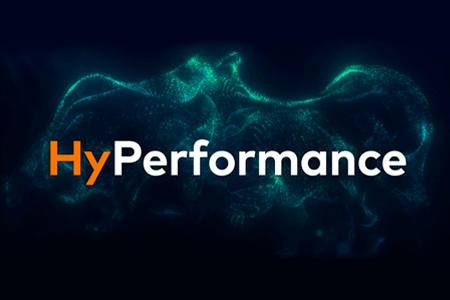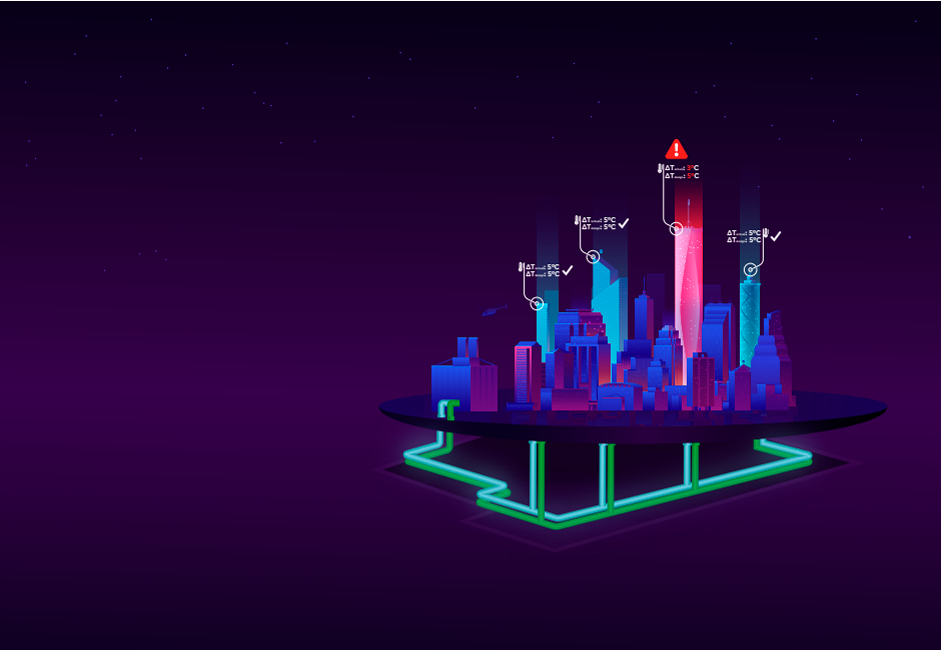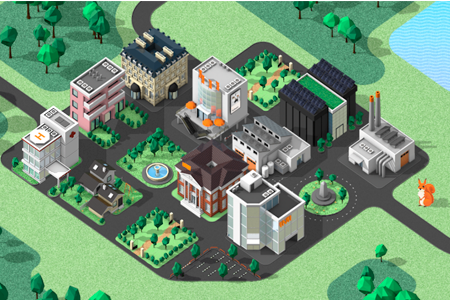All your questions answered
District Cooling: Frequently Asked Questions
What is District Cooling?
District Cooling is a solution that delivers cooling or heating services via an interconnected network of insulated pipes. These pipes connect a central generation point to various types of buildings, including commercial, industrial, and residential.
What are the benefits of District Cooling Systems?
District Cooling Systems offer increased efficiency, reduced emissions, and enhanced resilience. By centralizing thermal energy production and distribution, they cut costs and environmental impact. Utilizing diverse energy sources promotes sustainability, while redundant infrastructure ensures reliability during outages. These systems optimize urban development and integrate with smart city technologies for improved energy management.
What is the difference between District Energy Systems and central heating or cooling?
While central heating or cooling systems typically serve individual buildings, District Energy Systems provide heating or cooling to multiple buildings within a district from a centralized plant. This centralized approach increases efficiency by leveraging economies of scale and allows for the integration of diverse energy sources. District Cooling Systems also offer the potential for combined heating and cooling solutions, enhancing overall energy efficiency and sustainability for entire districts.
How do District Cooling systems work?
District Cooling systems utilize centralized plants to produce thermal energy. This thermal energy is then distributed via a network of insulated pipes to various buildings within a defined area. Heat exchangers within each building interface with the district Cooling network, transferring the thermal energy to meet the specific heating, cooling, or hot water demands of each building.
What is Low Delta T Syndrome?
Low Delta T Syndrome is a condition where the temperature difference (Delta T) between the supply and return water in a chilled water system is significantly lower than the design specifications
What causes Low Delta T Syndrome?
Low Delta T can occur due to numerous factors such as over-sizing of equipment, uneven heat demand distribution among buildings, or inefficient control strategies.
You can learn more about the common causes and solutions here.
What is the impact of Low Delta T Syndrome in a District Cooling System?
Low Delta T Syndrome can significantly impact the performance of a district cooling system, leading to higher costs and a higher carbon footprint. To prevent this, district cooling plants may apply additional charges, including penalties for returning water below the specified temperature due to inefficient heat exchange.
How can you prevent or solve Low Delta T in a building?
Addressing Low Delta T syndrome requires careful system design, including proper sizing of equipment, optimization of control strategies, and the implementation of hydronic balancing techniques to ensure balanced heat distribution across the network.
If you are facing issues with Low Delta T Syndrome in your building, do not hesitate to contact us. We have a team of HVAC experts ready to help you achieve the optimal Delta T and enhance the energy efficiency of your building.

Are you seeking personalised advice?
Our HyPerformance team is prepared to assist you in enhancing the performance of your building’s HVAC system and ensuring that the designed Delta T is met, leading to a reduction in energy consumption and costs.

Optimise buildings in District Cooling
A building experiencing inefficiencies, such as Low Delta T Syndrome, can impact the performance of the entire system. We will address this topic and the solutions to increase energy efficiency in buildings and save costs.

Hydronic City
Whether you are managing a commercial office space, a healthcare facility, a data centre or a residential complex, our tailored HVAC systems are designed to optimise indoor environments while minimising energy consumption.

